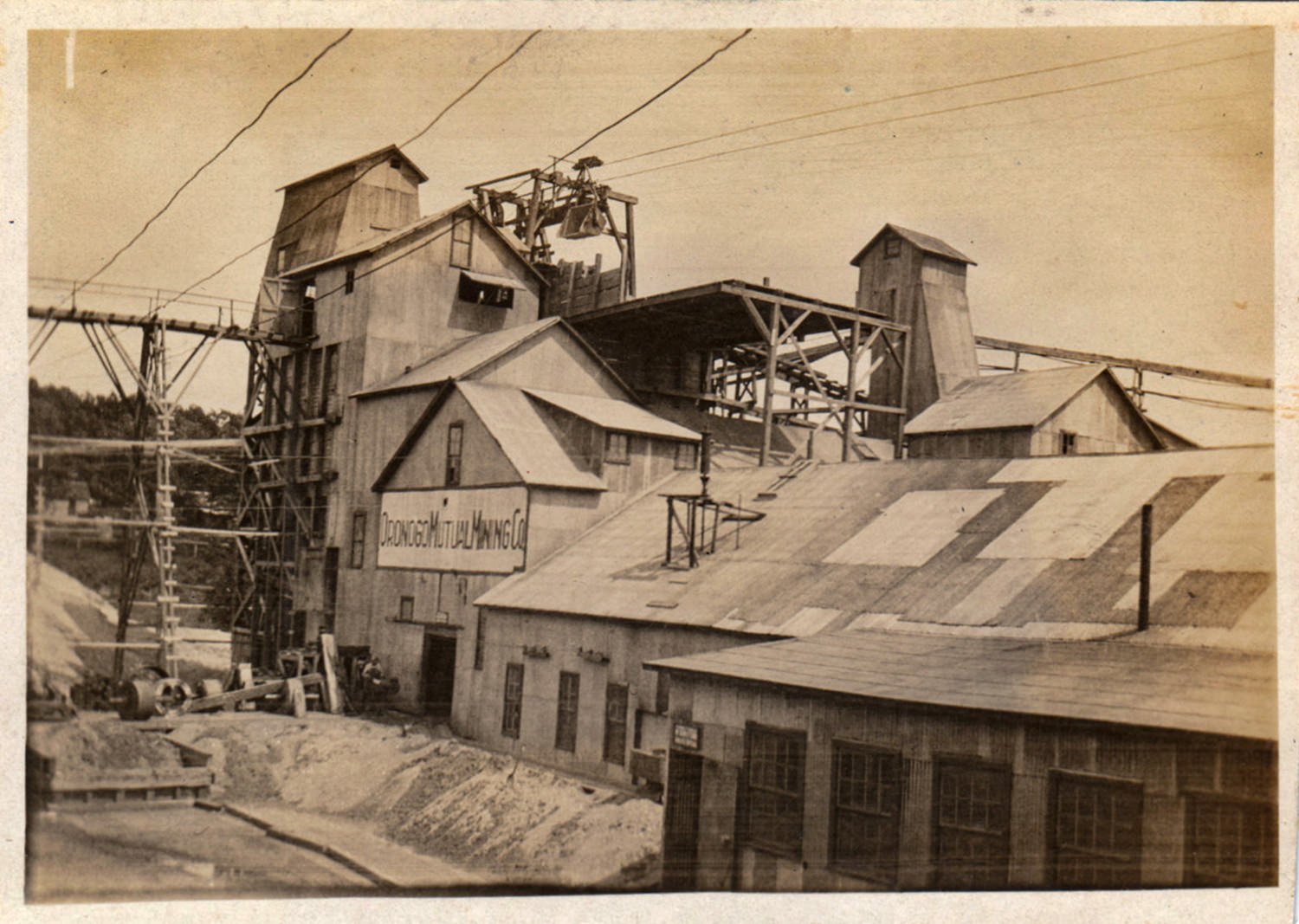
From the 3rd floor
of the Webb City Public Library
Webb City Area Genealogical Society
We recently acquired this photograph of the Oronogo Mutual Mine that was pasted into a personal scrapbook.
The photo shows a typical day at the mine with a mine worker pushing a cart or wheelbarrow toward the open door. Notice the metal roof patches. Can you image how hot and cold, depending on the season, it would have been working in this building?
We have a brief history of the Oronogo Mutual Mine written in Volume I of our book, Families and Histories of Webb City, Carterville and Oronogo.
Guy H. Waring entered the mining area sometime in the late 1880s as a young mining engineer. It is said he would ride horseback from Joplin to Oronogo in the early 1890s to inspect mines and make surveys and assays for the Granby Mining Company, which was then operating the mine later known as the Oronogo Circle.
On one such field trip, he found lead and zinc ore deposits south of Oronogo. He later established and operated the Oronogo Mutual Mining at that site. He opened his mine in 1899.
Shortly before the Circle Mine was to be closed, they began stripping pillars at the 180-foot level, finally deciding to blast those pillars and sink the ground to the 220-foot level. However, the ground sunk beyond 220 feet and created a 20-acre cave-in that measured 265 feet at its greatest depth.
The cave-in lay idle for several years and gradually filled with water. Later, in the mid 1930s, the Oronogo field was drained by means of huge Pomma pumps. Waring obtained a lease on the Circle property and began working the cave-in by means of strip-pit operations, the largest in the world for lead and zinc.
He built ramps from the surface to the bottom of the cave-in for access for power shovels and dump trucks. For a time the ore was shipped to the big Eagle Picher Mining Company’s central mill in Cardin, Okla., but Waring later built his own mill.
It is said that from 1850 to 1915, the “Circle” produced 70% of the lead and zinc in the United States and well over 35% of the lead and zinc production of the entire world. One single mass of lead estimated at 30,000 pounds, valued at $5,000, was found in the Circle.
In today’s market the value of lead is .90 per pound so this mass of lead would now be valued at $27,000.